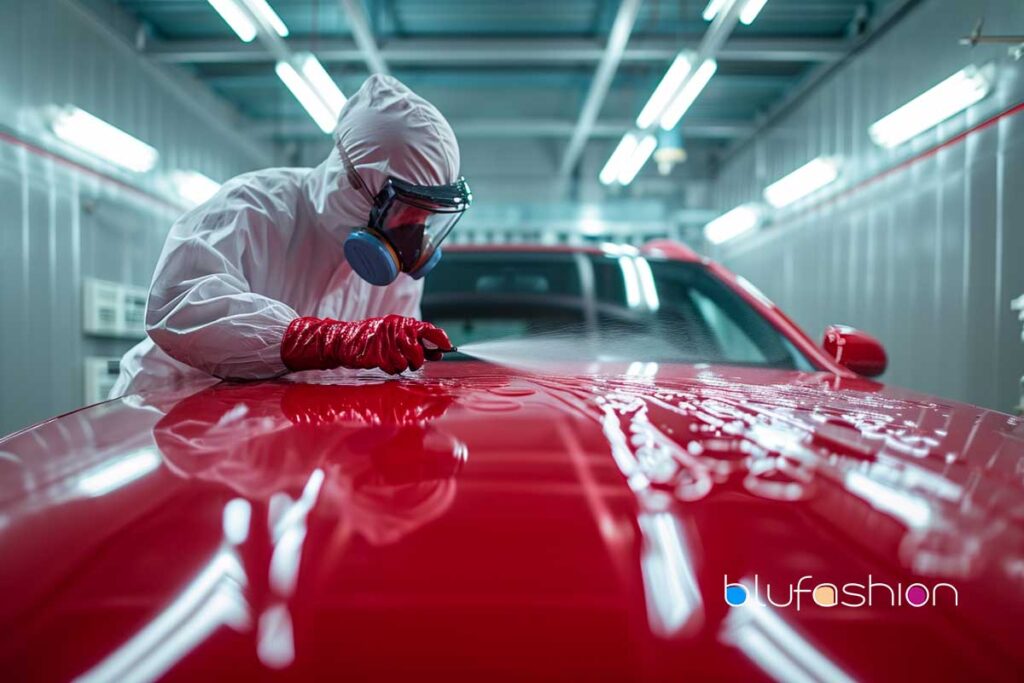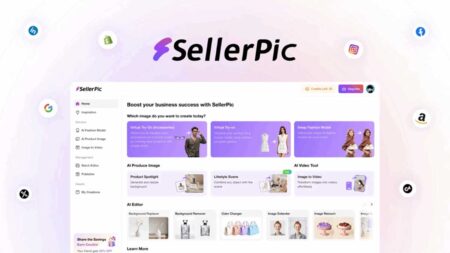Diamond Clear paint is an effective clear coat solution. It offers pros like ease of application, versatility, and superior results for repairs and restoration on surfaces. These surfaces include plastic and metals. Proper preparation, thin coats, and full cure times are key for best results.
What is Diamond Clear Paint?
Diamond Clear is a clear coat filler designed to cover up damage in the clear coat layer over the paint of a vehicle. It is marketed as an effective, fast, and easy solution for scratch repair. The product’s formula is designed to bond to and repair damage in clear coat, plastics, and more.
Diamond Clear Paint Pros
- Damage Repair: Diamond Clear is a clear coat filler that can cover up damage in the clear coat layer over the paint. Its revolutionary formula bonds to and repairs damage in clear coat and plastics. It also repairs damage in other materials.
- Ease of Application: The product is noted for its ease of application and speed. The application process is straightforward and quick. This can lead to increased profits for professional users.
- Superior Results:
- Diamond Clear provides superior results. This can lead to increased profits for professional users. According to the manufacturer, two 8oz bottles can cover 22 cars bumper to bumper.
- Versatility: Besides clear coat, Diamond Clear can also be used to repair plastics. Due to its superior adhesion properties, it can be applied to various materials.
It’s important to note that professional use is recommended for this product. Training is suggested to ensure proper application. There are also some mixed reviews about the product’s effectiveness and longevity.
How to Apply Diamond Clear Paint
Follow these steps when applying Diamond Clear paint:
- Preparation: Ensure the surface is clean and dry before application.
- Application: Apply using a bristle brush, foam brush, low nap roller, or spray equipment.
- Coating: Apply a minimum of 3 thin coats, allowing 10-15 minutes between coats. Apply 4-8 total coats for maximum gloss.
- Recoating: Recoating can be done once the previous coat is dry-to-touch. Recoat within 8 hours for best results.
- Curing: Allow 1 day for handling and 7 days for full cure. Use low air flow and moderate temperature.
- Polishing: If needed, polish/buff after 24 hours to remove imperfections.
- Cleaning: Clean tools immediately after use with thinner.
Surfaces for Application
Diamond Clear can be applied to:
- Metals (ferrous, non-ferrous, aluminum, etc.)
- Paints and coatings
- Wood
- Ceramic
- Plastic
- Previously painted surfaces
Application on Plastics
Yes, Diamond Clear can be applied to plastic surfaces. Allow 1 day handling time and 7 days full cure time. For best results, apply thin coats and allow proper curing between coats. It can be applied to previously painted plastic as long as existing paint is fully cured. Use bristle brush, foam brush, roller, or sprayer to apply.
Applying Diamond Clear to Previously Painted Plastics
Diamond Clear can be applied to plastic surfaces that have been previously painted. Just follow a few guidelines.
- Make sure the existing paint or coating is fully cured. Then, apply Diamond Clear over it. If not, the paint underneath can start cracking.
- First, test a small area to check compatibility and desired results. Then, apply over the entire surface.
- Properly prepare the surface by cleaning and removing any contaminants. Lightly scuff smooth plastic to promote adhesion.
- Apply thin coats of Diamond Clear, allowing proper curing time between coats.
- Allow a full 7 days cure time before putting the newly painted surface into use.
- You can apply Diamond Clear over both water-based and oil-based paints. Just make sure they are fully cured.
- If applying over water-based paint, it’s especially important that the previous paint is fully hardened. If not, cracking can occur underneath the clear coat.
- Follow all Diamond Clear application instructions. Use proper application tools and recommended coat thickness.
With the right surface preparation and application, Diamond Clear can provide excellent results over previously painted plastic surfaces. Doing small test areas first is key to ensuring compatibility. It also helps avoid issues like cracking or delamination. Proper cure times are also critical. Allow them before using the newly painted surface.
Recommended Application Method on Plastics
Here are the recommended application methods when using Diamond Clear on plastic surfaces:
- Bristle brush – Use a high-quality bristle brush designed for clear coats. Apply in smooth, even strokes while maintaining a wet edge.
- Foam brush – Foam brushes can help prevent bubbles and allow you to get into grooves and textures. Use short, light strokes.
- Low nap roller – Choose a high quality mini roller with a low nap to avoid bubbles. Roll lightly in a crisscross pattern.
- Spraying – Spraying allows the most efficient coverage but requires proper spray equipment and PPE. Apply light coats, allowing proper flash time between coats.
- Proper preparation – Clean and scuff the surface to promote adhesion. Tack cloth prior to painting.
- Thin coats – Apply 2-4 thin coats for maximum clarity and to avoid sagging.
- Proper flash times – Allow 10-15 minutes between coats. Insufficient flash can cause hazing.
- Clean tools – Clean equipment immediately after use with the recommended thinner.
- Proper curing – Allow 1 day handling and 7 full days curing before use or polishing.
Following the product instructions and these application tips will provide best results with Diamond Clear on plastics. Take care to prevent bubbles, runs, and drips by applying thin coats with proper flash times.
Applying Diamond Clear Over Water-Based Paint on Plastics
When applying Diamond Clear over previously painted plastic surfaces, pay special attention. Especially if the existing paint is water-based.
- Make sure the water-based paint has fully cured before applying Diamond Clear. If not, cracking and other issues can occur.
- Water-based paints require longer cure times than oil-based paints. Follow the manufacturer’s instructions, and allow even extra cure time if possible.
- Do a small test spot first to ensure compatibility and adhesion. Check for any cracking or bubbling of the paint underneath.
- Make sure the surface is properly cleaned and prepared. Remove contaminants and scuff smooth plastic.
- Apply lighter coats of Diamond Clear over water-based paints to prevent possible reaction. Use 2-3 thin coats.
- Allow the full recommended Diamond Clear cure time – 1 day handling and 7 days full cure.
- Consider adding flex additives to Diamond Clear. This is important if you are painting a flexible plastic subject to bending.
- If cracking occurs during curing, lightly sand and reapply. The paint below likely needed more cure time.
With proper surface prep, application of thin coats, and full cure times, Diamond Clear can adhere well to plastics. It can also adhere well over water-based paints. But it’s vital to ensure the previous water-based coat is fully hardened first. Test areas can help identify any potential adhesion issues.
User Reviews
According to my research, reviews for Diamond Clear paint, specifically the DiamondFinish Clear product by KBS Coatings, are generally positive.
Users highlight its durability, flexibility, and high-gloss finish. It does not yellow, crack, or peel even in tough environments. It is praised for its ability to seal and protect a variety of surfaces.
These include metals, plastics, wood, and previously painted surfaces.
The product is also appreciated for its ease of application. It can be applied with a brush without leaving brush marks, as well as by spraying.
Some users have noted its resistance to harsh chemicals.
They also find it useful in automotive applications. As with any product, individual experiences may vary. It is always recommended to test the product on a small area first. This ensures compatibility and satisfaction with the results.
Conclusion
Diamond Clear paint provides a versatile clear coat solution. It can be used for repairs and restoration on a variety of surfaces, including plastic. When applying to plastics, it’s important to follow these guidelines:
- Properly prepare surfaces by cleaning and scuffing to promote adhesion.
- Apply using recommended tools like bristle brushes, foam brushes, rollers or spray equipment.
- Always apply thin coats, allowing proper flash time between coats.
- Allow 1 day for handling and 7 days for full cure before use.
- Can be applied over previously painted plastics if existing paint is cured. Do test spots first.
- Take extra care when applying over water-based paints on plastics. Ensure full cure to avoid issues like cracking.
- Follow all product instructions for best results. Seek training if unfamiliar with proper use.
Some people have mixed reviews on its longevity. Diamond Clear does offer a fast and easy clear coat solution for repairs. When applied properly, it works well. It’s crucial to apply thin coats and allow full cure times.
This is especially important on plastic surfaces. Test areas can help determine compatibility and adhesion over existing coatings. Diamond Clear is a versatile option for clear coat finishes and restoration. When used correctly, it is great for both.
We hope you found this article on the pros of Diamond Clear paint informative. If you have any experience using Diamond Clear, please share your tips in the comments to help others!
Don’t forget to check out our category for more helpful guides on auto repair and restoration. Let us know if this overview was useful and how we can improve future content for you!






